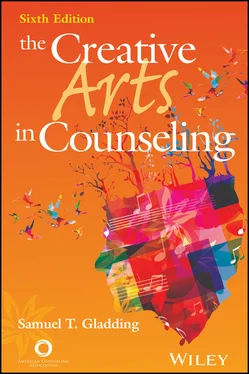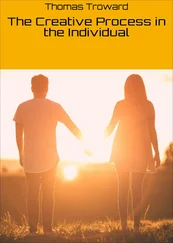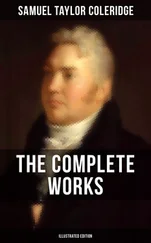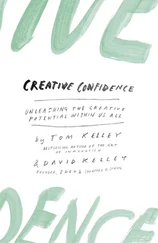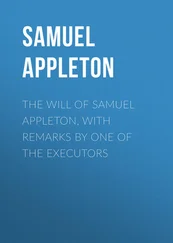Samuel T. Gladding - The Creative Arts in Counseling
Здесь есть возможность читать онлайн «Samuel T. Gladding - The Creative Arts in Counseling» — ознакомительный отрывок электронной книги совершенно бесплатно, а после прочтения отрывка купить полную версию. В некоторых случаях можно слушать аудио, скачать через торрент в формате fb2 и присутствует краткое содержание. Жанр: unrecognised, на английском языке. Описание произведения, (предисловие) а так же отзывы посетителей доступны на портале библиотеки ЛибКат.
- Название:The Creative Arts in Counseling
- Автор:
- Жанр:
- Год:неизвестен
- ISBN:нет данных
- Рейтинг книги:3 / 5. Голосов: 1
-
Избранное:Добавить в избранное
- Отзывы:
-
Ваша оценка:
- 60
- 1
- 2
- 3
- 4
- 5
The Creative Arts in Counseling: краткое содержание, описание и аннотация
Предлагаем к чтению аннотацию, описание, краткое содержание или предисловие (зависит от того, что написал сам автор книги «The Creative Arts in Counseling»). Если вы не нашли необходимую информацию о книге — напишите в комментариях, мы постараемся отыскать её.
*To purchase print copies, please visit the ACA website here
*Reproduction requests for material from books published by ACA should be directed to permissions@counseling.org
The Creative Arts in Counseling — читать онлайн ознакомительный отрывок
Ниже представлен текст книги, разбитый по страницам. Система сохранения места последней прочитанной страницы, позволяет с удобством читать онлайн бесплатно книгу «The Creative Arts in Counseling», без необходимости каждый раз заново искать на чём Вы остановились. Поставьте закладку, и сможете в любой момент перейти на страницу, на которой закончили чтение.
Интервал:
Закладка:
Another way of working with couples is to involve spouses in taking turns improvising on percussion instruments to depict musically what they perceive their typical pattern of communication to be. While one spouse improvises, the other writes thoughts that result from what that spouse thinks the other is saying musically. The patterns for different feelings and times of communication are then discussed with the realization that some patterns of communication appear to be automatic and disruptive but that whatever the beat, the pattern can change (Botello & Krout, 2008).
Groups
Most people in groups wish to be in concert with themselves and humanity. They are also looking to see where they fit in with others. Music provides an avenue for clients to assess themselves and others. Music can be especially powerful in a group at its beginning or end. Select music can help set an upbeat or a sedate tone when clients first enter the group room. For example, beginning a group by drumming is a “unique way to jump start conversations about group dynamics and each person’s role in them” (Camilleri, 2002, p. 264). In addition, drumming may immediately improve the moods of those who participate in it and thus enhance the beginning of a group (Mungas & Silverman, 2014). Likewise select music or music activities during termination can help instill in clients a sense of closure and can promote integration (Plach, 1996). A number of songbooks, such as Rise Up Singing (Blood & Patterson, 1992), contain a wealth of songs about subjects ranging from faith to friendships; they can be used to introduce music into a group at any stage, especially one that contains people from a wide range of cultural backgrounds.
Hodas (1994) reported using music in a mixed group of White and Black male adolescents to help the group handle anger, learn coping skills, and appreciate universal truths about human nature. In this group, a variety of songs, some of which were even violent, were played. The group members came to realize through the music that when wrongs occur in society more constructive actions than revenge can and should be taken.
Stephens et al. (1998) used hip-hop music, also known as rap music , in an HIV/AIDS preventive counseling format with Black adolescents and young adults to educate these populations about protective factors for HIV. They contended that the overall implications of using hip-hop music in health promotion with Black youth are limited because this method makes use of culturally relevant materials to address the educational and health needs of the target community and is grounded in an approach that serves to stimulate cooperative learning based on peer-developed content. Moreover, the use of this medium can be applied to other health promotion activities such as violence/harm reduction and substance abuse prevention, upon reviews of songs for appropriate content. In addition, hip-hop influences men’s willingness to disclose emotion or even to inquire about counseling. Emotional writing, such as in hip-hop, is a form of counseling suggested to be particularly effective with male clients (I. Levy & Keum, 2014).
Music also has a place in the healing and helping process with survivors of sexual abuse (MacIntosh, 2003). Through the use of music, spontaneity is evoked and participants in the group become involved on a sensory and feeling level with the group or counselor. In the process, group members become fully present in a new way and become more involved in their relationships with others. Specific musical techniques used by MacIntosh (2003) include breathing and tone techniques, song writing in groups, and playing the drums.
Clients With Illnesses
Music functions in several therapeutic ways for clients with illnesses (Hanser, 2016). Music can serve to promote closeness within families through group singing, lyric analysis, and reminiscences. This type of bonding enhances the quality of life for family members both inside and outside of the hospital and helps establish better communication patterns and firmer support systems. In the process, anxiety and tension are lessened and intimacy is promoted (Slivka & Magill, 1986). In addition, religious faith may be increased through playing and singing religious music if the family is so oriented.
Rider (1987) stated, “Music has the capacity to touch and bring to the surface emotions that have been repressed for years” (p. 117). Some chronic diseases such as cancer, rheumatoid arthritis, and coronary difficulties correlate with negative feelings such as anxiety, hostility, and depression. Fatigue appears to be an especially prevalent and undertreated symptom in cancer patients and cancer survivors. Select music, in particular violin, flute, and piano, can help clients in these and other tension-filled situations to relax more, especially if it is uniquely and individually selected for each patient (Fredenburg & Silverman, 2014). Therapeutic compositions may also be played universally. Music cited in the literature as instrumental in reducing anxiety include the Largo movement from Dvo  ák’s New World Symphony and Brahms’s First Symphony (dos Santos et al., 2019).
ák’s New World Symphony and Brahms’s First Symphony (dos Santos et al., 2019).
Music can also encourage healing by promoting catharsis and refocusing thoughts. For instance, G. Clarkson (1994) recounted the case of a young man with autism who, after several years of music therapy, began to communicate again. Likewise, in clients with trauma-induced dissociative disorders, music may succeed where words sometimes fail because of its ability to reunite and integrate all parts of a client’s total experience (Volkman, 1993). In addition, music therapy seems to be helpful in the recovery of breast cancer patients as they work to find and form new identities (G. Aldridge, 1996). In the process of making music, patients bring feelings into consciousness without any immediate verbal labels being attached to their emotions. This active intervention uses patients’ strength and creativity to cope and maintain coherence in the midst of what might otherwise be chaotic transition. Furthermore, music and music therapy in particular can have value in reducing physical agitation in participants with Alzheimer’s disease (Jennings & Vance, 2002).
In addition to the direct use of music with those who have physical or mental disorders, music, as well as breathing, can be used in psychiatric emergency rooms to reduce the stress of clients and visitors in such settings (R. G. H. Miller & Spence, 2013). Overall, music has proved to be significantly effective at suppressing and combating the symptoms of psychosis and related disorders. However, researchers must still investigate the effects of live and recorded music, of structured music groups and passive listening, and of classical music and nonclassical music (Silverman, 2003).
Teachers, Teaching, and Supervision
Music can be used with teachers to help promote their mental health and avoid burnout. For instance, Cheek et al. (2003) found that elementary teachers who participated in school-based counseling groups that used music therapy techniques in conjunction with cognitive behavioral interventions reported lower levels of burnout symptoms than teachers in school-based counseling groups that used cognitive be havioral interventions only. Forensic psychiatric patients may also benefit from cognitive behavioral music therapy, such as the song “Everything Changes” by Staind, as part of the multimodal treatment they receive. In music therapy sessions, music therapists deploy music in specific ways to elicit the reinforcement of appropriate behaviors in clients and help them experiment with new behaviors, adjusting incorrect thoughts, relaxation, and role playing. In other words, musical situations are created to stimulate patients to modify their behavior (Hakvoort & Bogaerts, 2013).
Читать дальшеИнтервал:
Закладка:
Похожие книги на «The Creative Arts in Counseling»
Представляем Вашему вниманию похожие книги на «The Creative Arts in Counseling» списком для выбора. Мы отобрали схожую по названию и смыслу литературу в надежде предоставить читателям больше вариантов отыскать новые, интересные, ещё непрочитанные произведения.
Обсуждение, отзывы о книге «The Creative Arts in Counseling» и просто собственные мнения читателей. Оставьте ваши комментарии, напишите, что Вы думаете о произведении, его смысле или главных героях. Укажите что конкретно понравилось, а что нет, и почему Вы так считаете.
